Independent Universe Alumni network
The Independent Universe - the Alumni network of the Independent School for the City, includes over 300 unique thinkers, do-ers and designers who have participated in the activities of the Independent School for the city. To strengthen and expand this community of likeminded people, we regularly consult them about topics and research projects that we are doing at the school, we organise meet-ups and send out a special alumni newsletter. Below you can read the stories of some of the School's Alumni, their experiences at the school and see what they are doing at the moment.
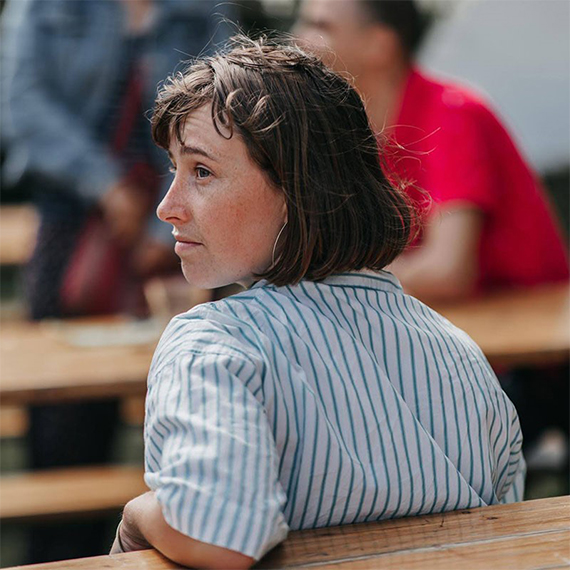
Camille Poureau is a landscape architect from France working at H+N+S Landscape Architects in the Netherlands. Read more about Camille here.
With a background in literature and philosophy, the field of landscape architecture quickly captured Camille’s attention as a discipline where ideas take physical form and shape everyday life. After studying in France and Finland, an internship in the Netherlands turned into a long-term stay, and nearly a decade later, Camille’s work and life has continued there.
This decision to stay was influenced by the Netherlands' unique relationship with the land. Unlike in France, where large-scale landscape interventions are still developing, the Dutch have spent centuries designing, reclaiming, and managing their environment. Water is both a challenge and a resource, with every intervention requiring careful planning, negotiation, and collaboration. In the Netherlands, landscape is not something that simply exists; it is something actively shaped.
Over time, Camille’s focus shifted toward climate change and its impact on cities and landscapes. The concern is not just about rising temperatures or heavier rainfall, but also the chain reactions that follow—disruptions to ecosystems, infrastructure, and daily life. Many still struggle to truly grasp the practical implications of climate change, and this gap between knowledge and action is a key issue in the work.
Camille’s path intersected with the Independent School for the City when she joined the +2,5° City Studio in 2023. The course explored how societies might react to a significant change in temperature: would cities rely on high-tech solutions, shift toward informal economies, or descend into survivalist chaos? The goal was not only to predict the future but to understand the different ways people might respond to crises. At that time, the projected changes felt distant, perhaps something for the end of the century. But just two years later, it's clear these changes are arriving much sooner than expected.
This experience at the Independent School brought a long-standing question back to her mind: What is the role of a designer in all of this? Designers are often expected to remain optimistic and create visions of the future that inspire action. But what if the reality involves no easy solutions? What if the responsible thing is to show a future that is difficult, messy, and even uninhabitable?
This tension plays out in Camille’s work and activism. There's a fine line between designing for a better future and confronting people with the uncomfortable truths of where society is headed. This question remains central to the practice—how to balance honesty with hope, and how to use design not just for imagining solutions, but for facing reality head-on.
Camille is also interested in working on personal projects and collaborations, particularly those that explore the intersection of landscape architecture and climate storytelling. While acknowledging that the field as a whole needs to catch up with the realities of climate change, there is value in grassroots initiatives—small, independent projects that foster new connections and create space for different perspectives. Camille sees collaboration with people experienced in storytelling, whether in spatial design or other media, as a powerful tool for shaping how climate change is understood and addressed. In this way, collaboration is not just about design—it’s about building a shared language to engage with an uncertain future.
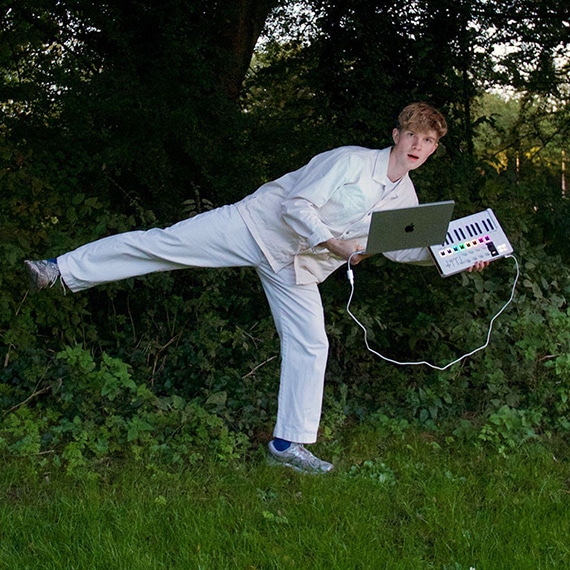
Kaj Boonstra is an architect, filmmaker, and sound artist whose diverse interests intertwine to create unique, immersive experiences. He joined the Film and Architecture studio, focusing on heat stress and warming of cities. Read more about Kaj here.
Reflecting on how these passions came to life, Kaj shared that filmmaking has always been at the core of his creative journey. Even during his early years in elementary and high school, he was constantly making films about anything that sparked his imagination. “What’s the point of making plain drawings when you can turn it into an immersive film that pulls you into the project?” he explained, emphasising his lifelong drive to go beyond traditional forms of expression. “That is a big theme in my life. I am always trying to turn what I’m doing into an immersive storytelling experience that draws the viewer in.”This mindset followed him throughout his academic career, culminating in his master’s thesis, where instead of presenting conventional architectural drawings, Kaj produced a full 30-minute movie, set entirely within the design he had envisioned. His passion for blending film and architecture only deepened when, while working at an architecture firm, he heard about the "Film and Architecture" studio of the School from a friend of his in 2023. The concept immediately resonated with him—"it clicked."
The theme for the "Film and Architecture" studio centered around heat stress and the warming of cities, providing the perfect opportunity for Kaj to bring together his various creative passions. In addition to his work in film and architecture, Kaj has a deep-rooted connection to music, which has become an integral part of his artistic practice. His work often incorporates sound as the primary medium, whether in installations, performances, or experimental music projects. Recently, he has come to embrace the identity of a sound artist, explaining, “When you put music, film, and architecture together, it makes you live it.” Building on this mindset, for his studio project, rather than simply documenting the effects of heat stress, Kaj took a more inventive route—he envisioned an opera. Recognising that heat stress impacts not just humans but animals, objects, and even buildings, he devised a surreal narrative where the real world gradually transforms into a chocolate reality. As the temperature rises, everything begins to melt, with the characters humorously singing about the heat in an exaggerated, almost comical way.Kaj's most recent project, SENSE, represents a new collaboration with his partner, environmental engineer and artist Emma Little. The idea for the project was born during a hiking trip in Switzerland, where they began discussing ways to combine their expertise into something more activist. As Kaj recalled, “What if we merge these two things and try to set up projects that tell contemporary stories—mostly about the environment in our case—and create installations that communicate these issues in a new way?”
To ground their project in something familiar to the Netherlands, they chose to work with climate data from the Cabauw Measuring Mast, a 213-meter-high structure located near Lopik in Utrecht, which the KNMI uses to monitor atmospheric conditions. The mast collects a vast array of climate data around the clock, providing critical insights into weather patterns, climate change, and air pollution over the past 40 years.
With Emma’s expertise in data analysis, they transformed this wealth of raw data into music, which was presented as a live performance titled Time Capsule. The performance offered the audience a novel way to engage with climate change, allowing them to experience it viscerally through sound. As Kaj put it, “The project allows you to ‘feel’ climate change in a new way.”
Nowadays, Kaj and Emma are looking for places to exhibit their work as an installation, and they seem to be destined to achieve remarkable things.
You can get in touch with Kaj through website, email, Instagram and LinkedIn

Tanja Potezica took part in the Smooth City course with Failed Architecture in the summer of 2022 . She completed her bachelor's degree in architecture at TU Munich and currently she is pursuing her Ph.D. at the Bauhaus University. Read more about Tanja here.
Tanja Potezica completed her bachelor's degree in architecture at TU Munich before embarking on a transformative journey in the field of urbanism. It was during an exchange year at the National University of Singapore, that she fully immersed herself in the realm of urban planning and development. This experience ignited her passion, leading her to pursue a master's degree in European Urban Studies at the Bauhaus University (DE), focusing on the political and sociological dimensions of urbanism. She also undertook a research semester in Ethiopia, where she delved into the complexities of displacement of informal settlements within Addis Abeba's urban landscapes.
In the Summer of 2022, Tanja took part in the Smooth City workshop with Failed Architecture, which explored the evolving landscape of digitally driven, orderly urban spaces. Following the completion of her master's degree, Tanja worked for the Municipality of Amsterdam for five years, where she honed her expertise in power relations within urbanisation processes. Her focus on concepts such as the "Right to the City" theory led her in recent years to research the transformation of labour and work dynamics in urban contexts. She investigated questions about accessibility through labour and the balance between housing provision and employment opportunities, highlighting potential challenges in creating inclusive cities.
Currently pursuing her Ph.D. at the Bauhaus University, Tanja is deeply engaged in both research and teaching. She imparts her insights and knowledge to urbanism students, encouraging them to adopt a broader political and sociological perspective in their practice.
Her doctoral research centres on three distinct case studies: ex-Yugoslavia, Germany, and the Netherlands. Each case offers unique insights into urbanisation dynamics, with varying degrees of government influence and innovation in policymaking. From the socialist legacy of ex-Yugoslavia to the governance intricacies of Amsterdam, Tanja's work sheds light on the multifaceted nature of urban development and governance in relation to labour transformation.
Furthermore, Tanja has been critical about certain policies implemented by the City of Amsterdam, particularly concerning the current situation in the Red-Light District. These policies, she argues, have marginalised sex workers in the area, displacing their livelihoods under the guise of enhancing the city's image. In doing so, they neglect the needs of the workers who call the district home and rely on it for their livelihoods. Tanja argues that such actions exacerbate gentrification, a consequence that is evident to even the most casual observer.
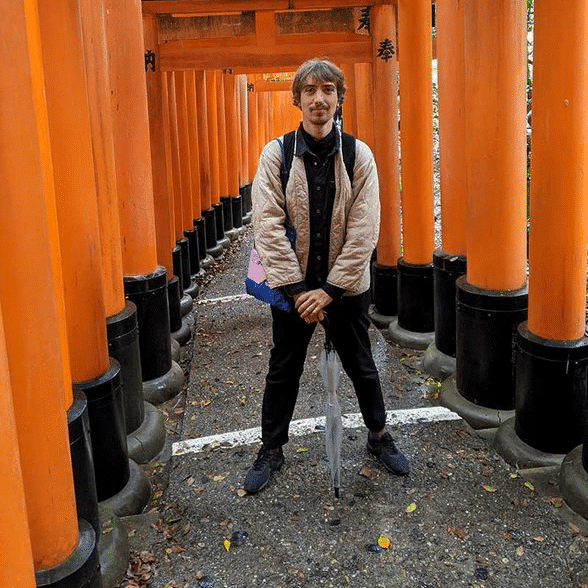
Bogdan Serediak took part in the Dirty Old Town Programme in 2022, that coincided with the distressing war in his homeland. This significantly impacted his artistic journey and career trajectory. Read more about Bogdan here.
As part of Dirty Old Town, Bogdan delved into the profound subject of preserving a nation's heritage amidst the backdrop of conflict. He contemplated whether it should be conserved in its original form or reimagined through architectural interventions. Which aspects of the built environment should be safeguarded, and which should be allowed to fade away? Moreover, as the war became an indelible part of Ukraine's identity, he pondered ways to represent both the pre-war and post-war heritage.
Driven by these critical queries, Bogdan embarked on an artist residency in The Hague and Vienna after the programme's conclusion to continue his research centred around the post-war reconstruction theme. In September 2022, he relocated to Tokyo as an independent researcher at the Tama Art University with the goal to focus on innovative methods of preserving architectural landscapes. Bogdan notes that Japan's recurrent exposure to natural disasters like earthquakes and tsunamis has fostered remarkable advancements in both materialistic and contextual approaches to rebuilding practices. Currently, Bogdan is working on an exhibition in Tokyo, scheduled for July, with his proposal for post-reconstruction scenarios that utilise machine learning techniques. With this project, he hopes to foster further discussion about collective memory as well as to prioritise native design paradigms within architectural communities.
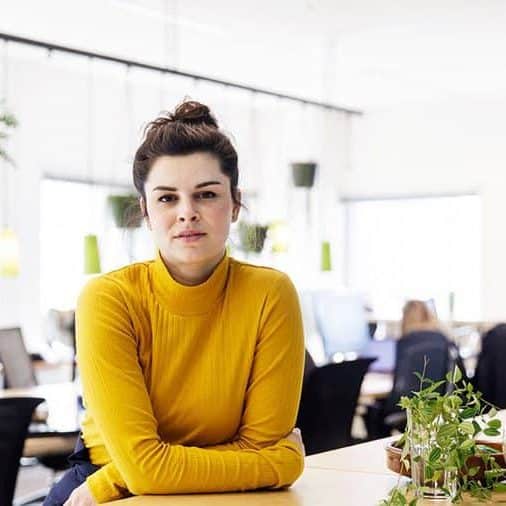
Alexandra Coutsoucos, a strategic and service designer who studied at TU Delft, participated in the Dirty Old Town programme which focuses on the urban fabric of Rotterdam from a variety of perspectives. Read more about Alexandra here.
She says that although at first glance, service design does not seem very related to urban development, she approaches the city as a network of services. “There is a lot of discussion about the city as a service. There is the hardware of the city such as the built environment and then there are the intangible relationships of services that make the city work, such as the transportation or the energy grid, or the infrastructure for the distribution of goods. For a city to become more resilient in hosting humans and non-humans in the best way possible, the role of the network of services is invaluable.”
Her office Livework studio landed a project that was about the redevelopment of an area in Bangkok, around the time she started developing an interest in the urban realm. From there they started working on the different aspects involved in the application of service design methodologies to the development of new urban realities. Alexandra remarks that, through her work in urban projects, she realised that it is a lot about community engagement, finding a communal thread between the stakeholders that make the city. It started to become the other face of all those practices that involve the citizens in the making of the city, of which tactical urbanism can be an example. “I think service design is particularly well equipped because it has a methodology and plenty of tools to create a bridge between the top-down and bottom-up perspectives. That is why the intersection of service design and urbanism is quite interesting.”
She says that the course has set her life on a new path, in the sense that she found her new niche passion, which led to Alexandra becoming the specialist in urban topics within her company. In the pursuit of consolidating her approach, she recently joined Politecnico di Milano’s design lab for social innovation called Desis Lab. Here she collaborates as a research fellow for the research project SMOTIES which builds on the Human Cities Network, while she continues working part-time in her previous job.

Bahar Orçun is an architectural designer, spatial storyteller based in Amsterdam who took part in the "Living in the Superdiverse City" Programme of 2022. She is currently the coordinator of the Independent Universe Alumni Network. Read more about Bahar here.
I am an architectural designer, spatial storyteller based in Amsterdam and I am currently the person responsible for overseeing the activities of the Alumni Network. As an expat living in the Netherlands, I understand the challenge of finding like-minded individuals and establishing meaningful connections, both personally and professionally. This is why I believe in the value of sharing our experiences with one another in the Independent Universe.
Before embarking on this journey, I had certain expectations about what it would entail and what outcomes it might yield. While some of my expectations were met, I've also learned a great deal along the way. Having the opportunity to interview fellow alumni, some of whom I knew previously and others I met for the first time during our Zoom calls, was truly eye-opening. Each person shared a unique story shaped by their experiences at the school, and it was fascinating to see how they've translated that into their own paths. A notable observation from these interviews was the multifaceted nature of our alumni—everyone seemed to wear multiple hats and possess diverse skill sets. As Anna aptly put it, "You have to be that person if you choose this path, you have to equip yourself with many talents." This, to me, epitomises the essence of our community. It is incredibly rewarding to witness what the Independent School for the City's alumni have achieved in the fields of architecture and urbanism, and I look forward to continuing this journey with all in the Independent Universe.
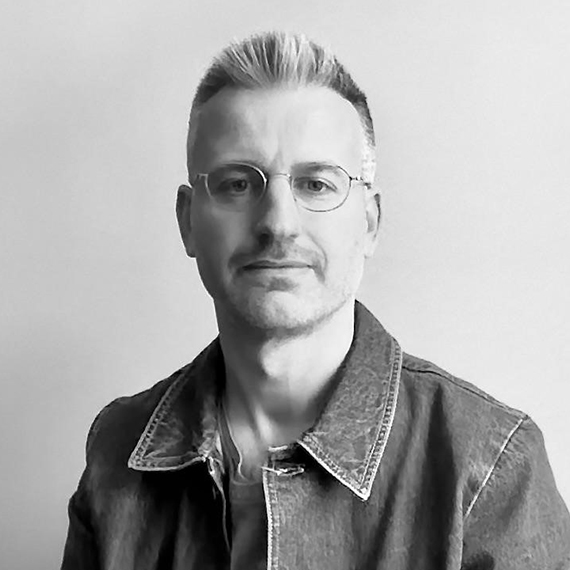
Sander van Venetie is an Advisor in Spatial Quality (Omgevingskwaliteit) at the Dorp, Stad en Land Foundation. Read more about Sander here.
His work involves evaluating private initiatives to determine whether they align with municipal goals and broader spatial ambitions. A key part of his role is helping municipalities navigate the complexities of the evolving planning framework, particularly in light of new national policies that emphasise public participation. While the law encourages a more integral and dialogue-driven approach, Sander explains that its success largely depends on how local governments choose to implement it. His focus is on ensuring that planning processes are structured in a way that not only aligns with each municipality’s vision but also fosters meaningful engagement between planners, citizens, and private developers, ultimately shaping environments that reflect both national priorities and local needs.
Dutch national planning played a key role in shaping cities after WWII, with ‘new towns’ designed for structure and growth. As a child, growing up in Zoetermeer, Sander saw them as well-organised, later realising their strengths and limitations while studying urbanism at TU Delft. “For decades, Dutch national planning guided urban development,” he explains. “A dedicated ministry oversaw large-scale projects, but between 2010 and 2022, that structure was dismantled. An integral, spatial approach of critical issues like housing, energy, and ecological challenges was left unaddressed, and now discussions about restoring national policies have resumed.” This led him to explore how top-down planning affects people’s sense of ownership and responsibility in their communities.
Recognising the need for design-driven solutions, the Ministry of Make!—a collective initiative by The Independent School for the City, ZUS, MANN, and the International Architecture Biennale Rotterdam—was launched in 2022 to bring attention to urgent spatial challenges, including housing shortages, climate adaptation, and energy transition. The initiative called on 100 Dutch design teams to envision 10,000 climate-proof homes at selected test sites across the Netherlands. The School introduced a collaborative workshop format, to which Sander was drawn to. Through site visits, expert input, and research, each team developed a large-scale model contributing to a nationwide vision for sustainable urban development. The final models were exhibited at the International Architecture Biennale Rotterdam, illustrating the collective effort to reimagine and rebuild the Netherlands.
One of the most valuable aspects for Sander was the diversity of perspectives. “Working with designers from South Africa, Mexico, the UK, and the Netherlands reminded me that many aspects of Dutch planning, as a result of land reclamation and water management among others, are not universal,” he says. “Explaining and re-examining these systems made me realise how much planning shapes the way we experience our environment.”
With national policies regaining focus, the 2024 Environment and Planning Act (Omgevingswet) aims to consolidate multiple planning laws into one framework. While designed for efficiency, its impact depends on municipal implementation, balancing regulations with public involvement.
Reflecting on his experience, Sander sees the challenge in merging large-scale planning with a more flexible, community-driven approach. “The balance between top-down coordination and grassroots involvement will shape how Dutch cities evolve in the coming years.”
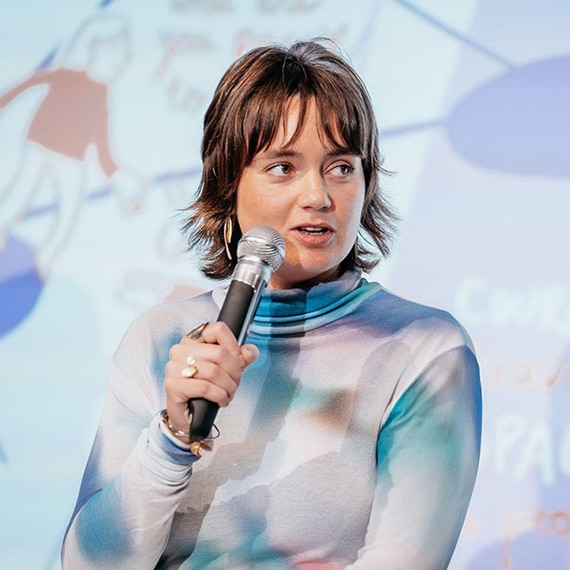
Nuria Ribas Costa is a journalist and jurist by background and an urbanist and emerging social/cultural curator. She participated in the Super-Diversity course at the Independent School. Read more about Nuria here.
Her passion for urbanism was sparked during a law course on the subject, a field she hadn’t considered before. “Everything clicked back then because I grew up in the countryside, in Ibiza,” she shares. “I’m very attached to my homeland, where territorial changes happened fast—economically, socially, culturally. My connection to it is tied to identity, and that’s a big part of what the island is.”
Realising she wanted to focus on urbanism, Nuria knew staying in Spain would mean going deeper into law, a path she admired but found limiting at the time. “Legal and policy frameworks are powerful agents of change,” she says, but she was hungry for other disciplines and international references. In 2018, she left Spain to pursue her vision of systematic change across all levels, including land use.
After finishing her law degree in Oslo, Nuria moved to the Netherlands, joining the architecture firm OMA. "OMA was fascinating," she reflects. "It’s an architecture office, but it explores so many spaces, which was exciting for someone like me, who wasn’t an architect." Her time there included work on the Countryside, The Future exhibition at the Guggenheim in New York and the Hospital of the Future project. However, despite the diversity, Nuria began feeling disconnected. “I needed to get closer to the street,” she says. “Sometimes OMA felt like an ivory tower.”
Leaving OMA, Nuria started freelancing, which allowed her to fully embrace her diverse interests. “Suddenly, I could do everything,” she recalls. She began working at Humankind, a small agency for urban change where everyone has different backgrounds; and also started collaborating with the Center for Music Ecosystems, merging her love for culture and urbanism. "I’ve always been a cultural consumer—music, nightlife, exhibitions. It all resonated with me," she explains, realising that her work in urbanism didn’t mean giving up on culture. She also started working on governance projects in Spain (like Tribunal de la Ciutat in València) and became an editor and moderator for De Dépendance in Rotterdam, something that “keeps her journalist self alive and engaged”.
One of the most transformative experiences for Nuria came when she joined a super-diversity course at the Independent School. “I get restless,” she says, “and signing up for the course was a way to shake things up.” The environment pushed her to connect ideas she hadn’t thought about in years. “It was a spark—I met people I admire while thinking actively about something I’m very interested in. It was incredibly stimulating.”
For Nuria, the school provides a much-needed space to slow down and think deeply about complex issues. "I’m sick of fast headlines," she says. "I need time and thought capacity to process things. The school gives me that space to reflect on urbanism in a thoughtful, relevant way."
Nowadays, Nuria’s career is a vibrant mix of projects. She works on urbanism, curates cultural events, writes for independent magazines (MONU, Failed Architecture) and engages in debates on topics like transience and the future of cities — “Everything clicks, even though it feels like I’m everywhere at once,” You can get in touch with Nuria through: email, Instagram and LinkedIn.

Anna Borunova holds a master’s degree in Art and Visual Culture from the Radboud University in Nijmegen (NL). During her studies, she interned at Crimson Historians and Urbanists, the initiators of the Independent School. Read more about Anna here.
It was during this time that Anna's professor at Radboud University recommended an internship at Crimson Historians and Urbanists, the initiators of the Independent School, providing her with an opportunity to further explore her passion for architecture and urbanism. This internship served as a catalyst for Anna, igniting her curiosity and prompting her to delve even deeper into the subject matter.
During her internship, Anna had the opportunity to contribute to ongoing research by writing a chapter titled "Gestures Towards the Socialist Landscape: The New City of Volzhsky" for the book “New Towns on the Cold War Frontier” published online by Crimson. Anna described the period of working at Crimson and the Independent School for the City as "greatly liberating." She navigated the process independently, which bolstered her self-confidence for future endeavours in the field.
Concurrently, Anna participated in the "Follow the Money" course in 2019 at the School, focusing on the housing crisis and specifically the shortage of residential units for the middle class. This workshop provided her with a comprehensive understanding of the field and elucidated the intricate relationship between economic resources and architecture.
In 2021, with the second wave of COVID-19 and for personal reasons, Anna returned to Russia. She transitioned into the role of an independent writer for the Great Russian Encyclopedia, an online portal, where she explores the works of 21st-century designers with the mindset of a researcher. This role allowed her to continue her engagement with the field while pursuing her interests in architecture and shifting them towards design.
Anna’s primary place of work now is MYRA Creative Community, a private non-governmental organisation situated in Suzdal, a city around 1000 years old. Members of the community are scattered around the world from Suzdal and Moscow to Europe, São Paulo and Jerusalem. By co-creating contemporary cultural initiatives such as art exhibitions, she actively contributes to the dialogue between the old and the contemporary, between tradition and experimentation. Within this vibrant landscape, she plays the role of collection manager. The community boasts its own art collection, focusing on books and periodicals from the avant-garde period of the 1920s and 1930s. The motto of the collection can be described in three words: beauty, eccentricity, and artistic production. Collaborating with a colleague, Anna curates the Telegram channel "Artificial Oracle," offering fortune-telling posts based on quotes from 1920s literature and sharing insights into the collection through various research topics and daily activities. Additionally, she is co-overseeing the launch of a museum shop centred around the collection. The website of the community can be visited via https://myra.ru/.

Eileen Stornbrink participated in the Earth Discovery Workshop in the spring of 2022. She studied architecture at TU Delft and has always been fascinated by the use of natural materials in architecture. Read more about Eileen here.
Together with her collaborator Danique Landburg she has acquired methods for exploring earth as a building material, to be more precise, for making rammed earth, which is a technique of pressing an earth mixture of clay, sand, stones and a bit of water in moulds until it is strong enough to be used as a wall. Eileen and Danique put the knowledge they acquired during the workshop to use by exploring the material for a design project in a small village in Para, Surinam, which is a former plantation, now owned communally by the villagers.
The region of the project in Surinam is rich with clay and sand that can be used as a building material. “Using earth as a building material has different potential depending on the location.” Eileen says. “In countries like the Netherlands, where labour is relatively expensive, rammed earth is mostly used in prestigious projects. Whereas in places where materials are relatively expensive, using earth as a building material could reduce costs. Next to adding sustainable, climatic and aesthetic value.”
She says that the material in different locations responds differently to the process of mixing and ramming, they may for example require different ratios. So, for the project in Surinam Eileen and Danique made samples of each combination, the way they learned during the Earth Discovery Workshop. Eileen remarks that using earth as a building material in this way was not very common among local builders. Therefore, these samples later became a showcase for exploring the material as resilient enough to be used in the local climate.
So far, they have tested out different mixes and built a mock-up of a wall at the site. Based on the results of the research trip, Eileen and Danique are making a design for a square and community centre named ‘Bosse Bromki Pren’ and aiming to continue building activities in 2024.
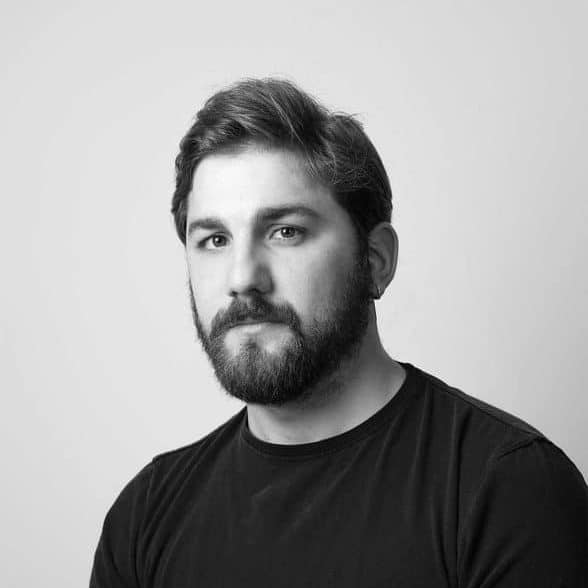
Antonio Paoletti. Architect, filmmaker and researcher Antonio Paoletti, took part in two of the school’s programmes: the Earth Discovery workshop and the Film & Architecture Studio 2022. Read more about Antonio here.
Antonio's passion for filmmaking has been a driving force throughout his journey. His academic pursuits led him to study architecture at TU Delft, where he serendipitously discovered his deep affinity for the field. Eager to forge connections between his passions, he embarked on a documentary project in Bangladesh, capturing the essence of its streets, public spaces, and inhabitants. Although he didn't initially have a specific storyline in mind, he viewed the footage as a potent tool for research and documentation.
Reflecting on the Film & Architecture Studio, Antonio acknowledges that he was primarily a self-taught filmmaker. Until then, he had predominantly used film as a means of research and documentation. The programme and especially its tutor Jord den Hollander has left a lasting impression on Antonio, significantly impacting his artistic journey, revealing the distinct nuances between making cinema and employing film as a research tool. He recalls Jord den Hollander's wise words, emphasising that "Architecture starts from concrete things, but a good movie should start from feelings."
Subsequently, Antonio received a commission to create a film centred around Skopje, exploring the city's informal inhabitation. He embarked on extensive research, delving into Macedonia's past and present, discovering the city's abundant dualities and contrasts. From its fragmented national identity to its intertwined heritage shaped by historical events, Skopje exhibited a plurality that intrigued Antonio. The city's architectural characteristics served as a means of representation, highlighting the intriguing interplay between its grand reconstruction after earthquakes and its contemporary interpretation of ancient architectural styles. Antonio keenly observed that the true contrast emerged from the everyday lives of its inhabitants. Macedonia's stark poverty, evident in the daily struggles of street vendors and small business owners juxtaposed against the grandeur of the architecture, became a story of profound dichotomies.
Antonio’s film captures the street vendors while they are reading from descriptions of ancient palace architecture and other significant structures from historical literature. This poignant juxtaposition unfolded as the hardworking vendors, their hands covered in ash and dirt, intoned the words from the books against the backdrop of modern architecture.